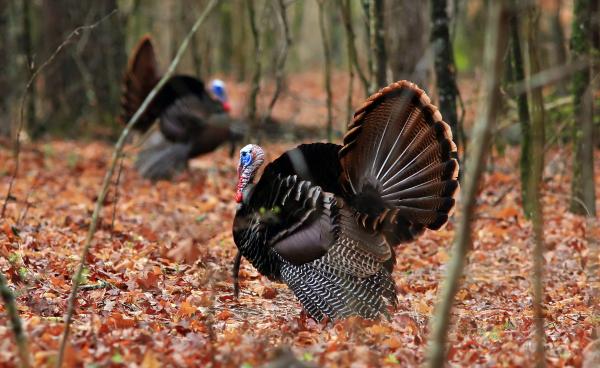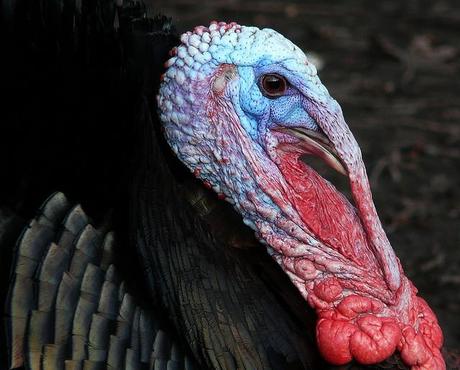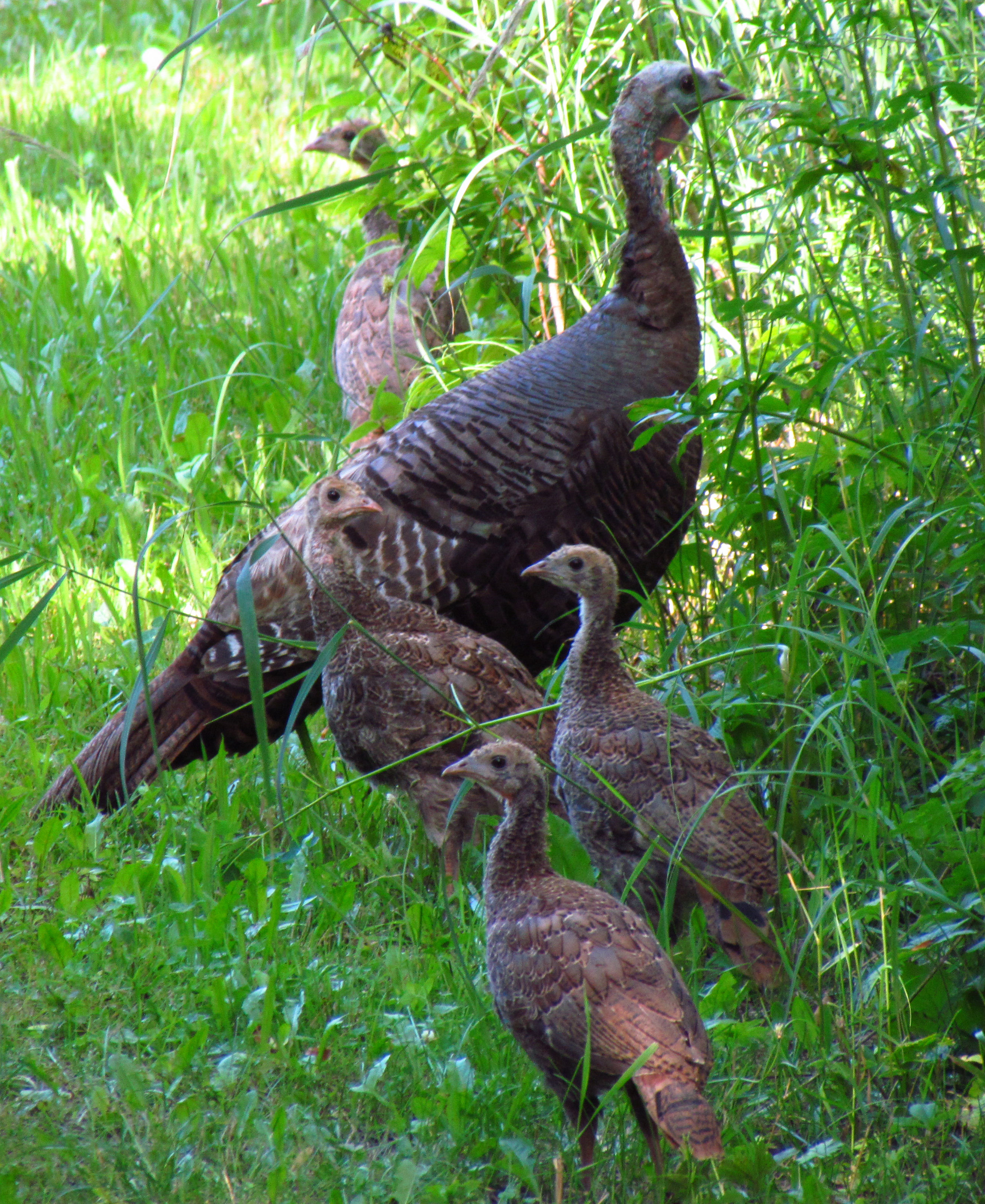 |
| Two male Wild Turkeys performing their characteristic "strutting" behavior. |
The Turkey is the largest living member of the Galliformes, or gamebirds, a group of about 290 species of mostly terrestrial birds that have compact bodies, small heads, short beaks, and high-wing loadings. Galliforme young are precocial, which means that they are able to walk within hours of birth, and in the case of Megapodes (large gamebirds from Australia and surrounding areas of land) their young are superprecocial, and are able to fly within their first day out of the egg.
Gamebirds as a whole are a very successful group; they've colonized every continent except Antarctica, and are found everywhere from tropical rain forests to frozen tundra. They are well known for often showing extreme forms of sexual dimorphism, and males are often larger than females and have almost excessive amounts of display plumage, which reaches its most extreme in peacocks and some pheasants. In some species of gamebird, males have an enlarged spur on their hind feet that can be used in both territorial battles, and as a defense against predators. (I think that a similar function might have encouraged the evolution of enlarged claws in dromeosaurids, iguanodontians, and prosauropods, although I doubt sauropods used their thumb claws in this way, since they seem more likely to have been used in foraging, according to recent studies.)
 |
| Male Turkey displaying coloration of his head and waddles |
The bare, blood-filled skin and thick body feathers in males doesn't come without consequences. Some studies has shown that overheating is a problem at times, and males will often rest in the shade for hours at a time, and have been known to pant on hot days like dogs and crocodiles do. Females, with less body plumage and more plumage on the head when compared to males, don't have as much of a problem, and are free to forage for food most of the day without resting. The diet of a Turkey includes grain, leaves (including conifer needles), nuts, seeds, berries, roots and insects. They have also been observed eating small vertebrates, including frogs, lizards, and even snakes.
 |
| Female Turkey with Chicks |
As with almost all gamebirds, males play no role in parental care, and are polygamous, mating with multiple females in a season. The female is thus left entirely responsible for taking care of the offspring, which can sometimes be up to 14 juveniles. The eggs are layed about one day apart in a shallow dirt impression, and they all hatch after about 28 days and leave the nest within their first 24 hours. The female will then watch over the young for the next 8-10 months until they are large enough to take care of themselves. If confronted by a predator, turkeys prefer to run rather than fly, using their long, athletic legs to escape danger, although if forced to they have been known to be quite agile fliers, and will sometimes roost in trees to sleep in relative safety.
Native Americans have long relied on turkeys, and they were considered a vital food source for many eastern tribes. During the first Thanksgiving, the governor of Plymouth sent out four men to catch turkeys for the big feast, and came back with enough turkeys to last them a week. However, turkeys weren't the only animals being served. Deer, geese, ducks, swans, passenger pigeon, fish, eels, shellfish, mussels, clams, and lobster were also on the menu. After the first Thanksgiving, British trading ships brought the animals back to Europe as food. They were forced to travel through Constantinople in Turkey before reaching other countries. People then associated the birds with that nation, which is where their name comes from.
Sadly, it seems that food is one of the only things Turkeys are remembered for in history, but one famous historical figure thought highly of Turkeys. Benjamin Franklin wanted the Turkey to be the national bird of the United States rather than the Bald Eagle. He believed the Turkey to be a more noble and proud bird than the Bald Eagle, as he had witnessed Bald Eagles stealing food from other smaller birds, and basically bullying them into submission (many Raptors are known do this). Many disagreed with him, however, preferring the stronger and more powerful Bald Eagle over what they viewed as the comical turkey. I'm happy with the Bald Eagle as America's national bird, but I'm also glad that Franklin looked past the non-traditional beauty of the Turkey and saw an attractive and proud creature behind that plump body.
I wish you all a Happy Thanksgiving, and hope you will respect the animal who gave their life for your meal today. As for me, I'm a vegetarian, so I'll be staying away from these birds today and hope those that did not end up on your plates will get fed just as well as I will today. What will I eat if not Turkey, you ask? Cauliflower bisque, herb-crusted tofu with mushroom gravy, chestnut sage stuffing, cranberry sauce, green bean casserole, candied yams, and delicious pumpkin pie are all on the menu tonight. Whatever is on your menu tonight, enjoy the holiday with your family and friends! And expect a lot of posts next month, since I'm going to be off for the Holidays.
No comments:
Post a Comment